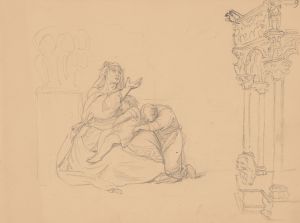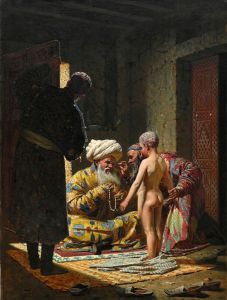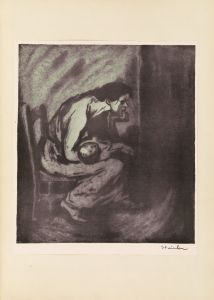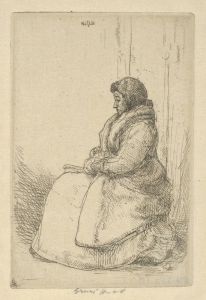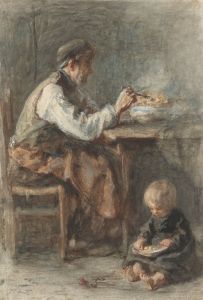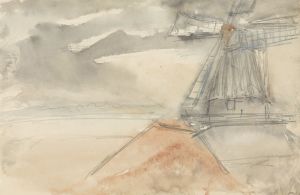
‘Alone in the World’
A hand-painted replica of Jozef Israëls’s masterpiece ‘Alone in the World’, meticulously crafted by professional artists to capture the true essence of the original. Each piece is created with museum-quality canvas and rare mineral pigments, carefully painted by experienced artists with delicate brushstrokes and rich, layered colors to perfectly recreate the texture of the original artwork. Unlike machine-printed reproductions, this hand-painted version brings the painting to life, infused with the artist’s emotions and skill in every stroke. Whether for personal collection or home decoration, it instantly elevates the artistic atmosphere of any space.
Jozef Israëls, a prominent Dutch painter of the 19th century, is renowned for his poignant and emotive works that often depict the struggles and hardships of ordinary people. One of his notable paintings, "Alone in the World," exemplifies his ability to convey deep emotion and social commentary through art. Israëls was a leading figure in the Hague School, a group of artists known for their realistic portrayals of rural life and the working class, and his works often reflect the influence of both the Dutch Golden Age and the French Realist movement.
"Alone in the World" is a striking example of Israëls' focus on the human condition. The painting portrays a young child, seated alone, with an expression of profound sadness and solitude. The setting is sparse, emphasizing the child's isolation and vulnerability. Israëls' use of muted colors and soft brushwork enhances the somber mood, drawing the viewer's attention to the emotional state of the subject. The child's downcast eyes and the overall composition evoke a sense of empathy and reflection on the part of the observer.
Israëls was deeply influenced by the social issues of his time, and his works often highlight themes of poverty, loneliness, and resilience. "Alone in the World" is no exception, as it captures the essence of human suffering and the silent struggles faced by many during the 19th century. The painting can be seen as a commentary on the social conditions of the era, where industrialization and urbanization often led to the neglect of the vulnerable, particularly children.
The artist's technique in "Alone in the World" is characteristic of his broader oeuvre, where he employs a realistic style to convey emotion and narrative. Israëls' attention to detail and his ability to capture the subtleties of human expression are evident in this work. The painting's composition, with its focus on the solitary figure, serves to heighten the emotional impact and underscores the theme of isolation.
Jozef Israëls' contribution to art extends beyond his individual works; he played a significant role in the development of modern Dutch painting. His influence can be seen in the works of later artists who continued to explore themes of social realism and human emotion. "Alone in the World" remains a testament to Israëls' skill as a painter and his deep empathy for the human condition.
The painting is housed in various collections and has been exhibited in numerous galleries, reflecting its enduring appeal and significance. Israëls' ability to capture the essence of human experience in "Alone in the World" ensures that the painting continues to resonate with audiences today, offering a window into the past and a reflection on the timeless nature of human emotion.





